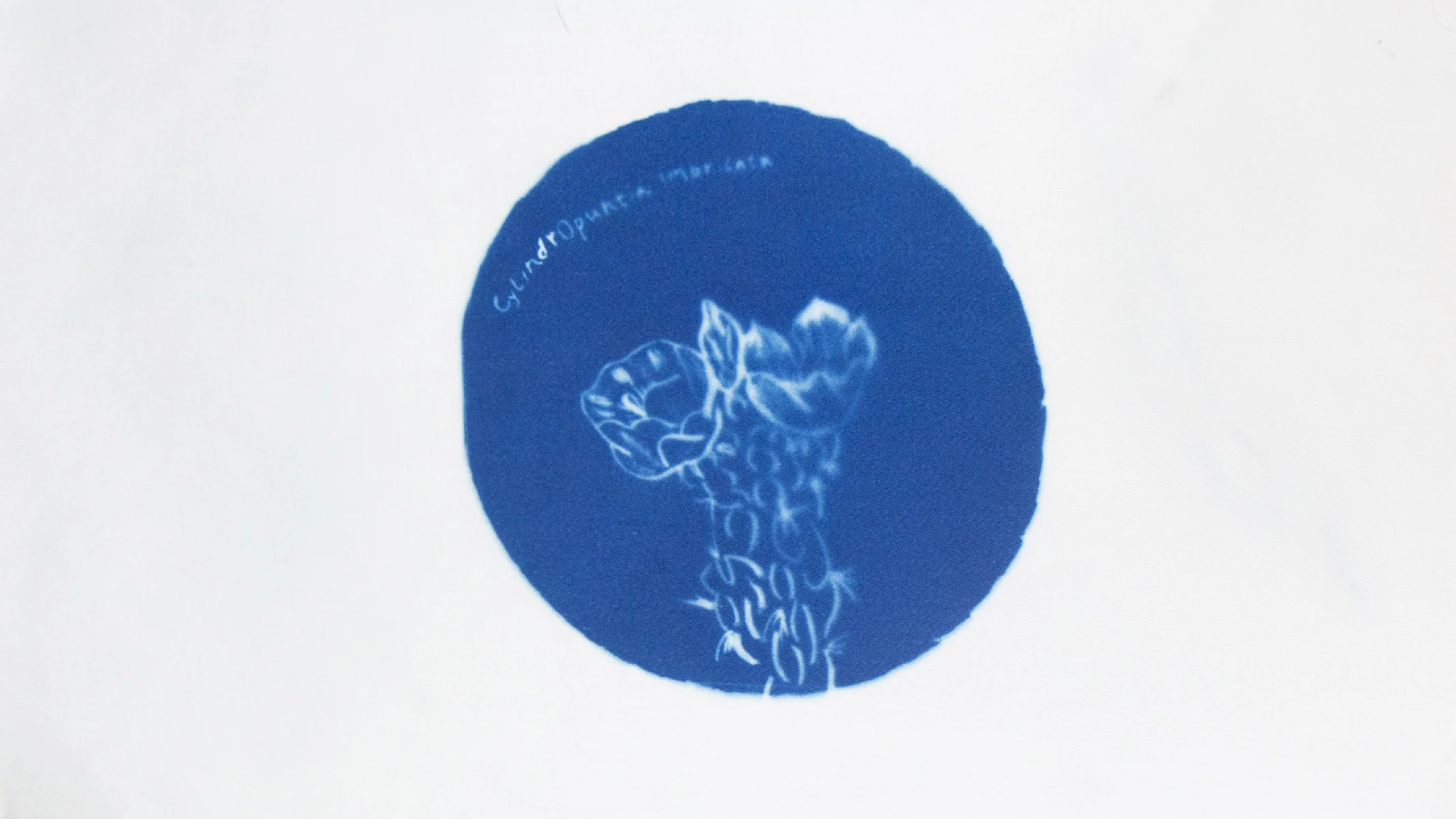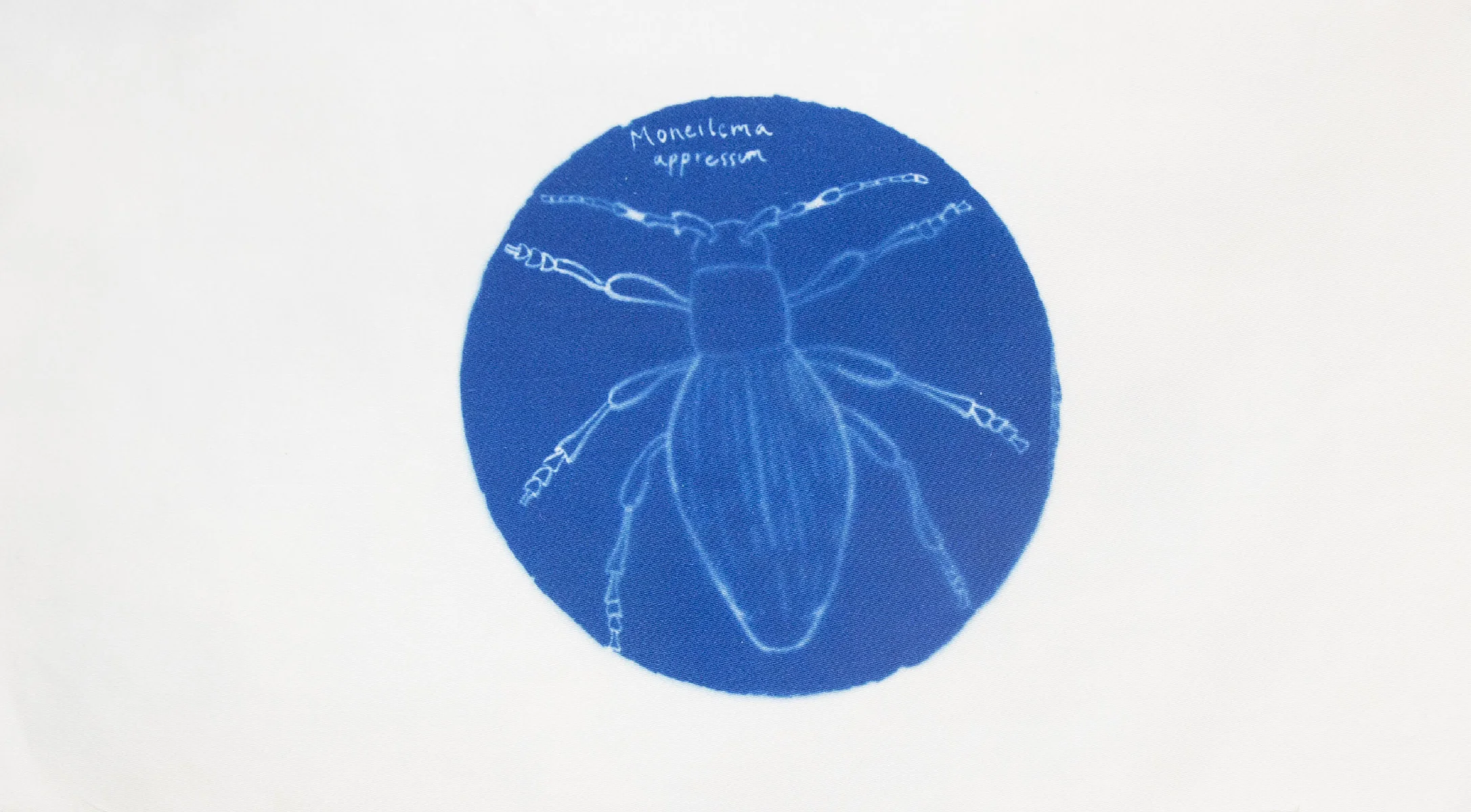The tree cholla (Cylindropuntia imbricata) is both resilient and aggressive, able to combat harsh environmental conditions as well as human impact. It is not alone in its fight for survival; it has mutualist counterparts. The two ant species Crematogaster opuntiae and Liometopum apiculatum provide protection against insect herbivores, in exchange for nectar. Intrigued by this relationship, I sought to translate it into cyanotype prints. The prints are made utilizing ink illustrations, flowers from the Sevilleta NWF, and black cardstock cut outs. My prints illustrate the “key players” in the interaction, the effectiveness of the two ant species, the visitation throughout a day, characteristics of the cholla, and a contextualization of the environment where the cholla thrives.
Special thanks to the National Science Foundation and the LTER for supporting this work, and additionally ecologist, Dr. Tom Miller in aiding me in my research.
Sevilleta National Wildlife Refuge, UNM Field Station, New Mexico, 2018. Cyanotypes on jacquard fabric.









































































































